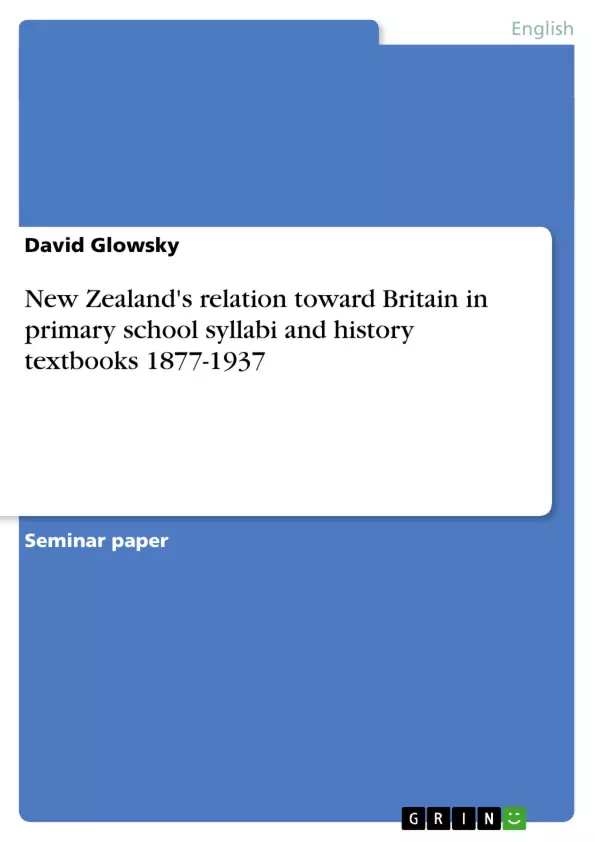One way to find out what a country thinks about itself and its relations to other countries is to look at what it tells its school children. This essay examines what New Zealand pupils were to learn about their country and its relation to Britain. For this the two subjects history and geography are taken into account, because they tell most of all about New Zealand’s ideas of the past and the present world. The essay is based on three syllabi and several history textbooks. Syllabi reflect what the children were supposed to learn, textbooks give a further indication of what the contents of lessons actually were. The timespan covered reaches from the first national curriculum in 1877 to the last history textbook published before World War II from 1937.
Inhaltsverzeichnis (Table of Contents)
- Introduction
- History and Geography under the 1877 syllabus
- The curriculum prescribes history from Standard III
- In contrast to history, the curriculum provided a very different conception for the geography classes
- History and Geography under the 1904 syllabus
Zielsetzung und Themenschwerpunkte (Objectives and Key Themes)
This essay examines the portrayal of New Zealand's identity and its relationship with Britain in primary school syllabi and history textbooks from 1877 to 1937. It analyzes how these educational materials shaped young New Zealanders' understanding of their country's history and place in the world.
- The evolution of the curriculum in relation to New Zealand's national identity
- The impact of British influence on New Zealand's educational materials
- The changing representation of New Zealand history in textbooks
- The role of geography in shaping perceptions of New Zealand's position in the world
- The shift in perspective from a purely British focus to a more New Zealand-centric approach
Zusammenfassung der Kapitel (Chapter Summaries)
Introduction
This chapter introduces the essay's focus on analyzing primary school syllabi and history textbooks to understand how New Zealand's self-perception and its relationship with Britain were presented to its schoolchildren. It highlights the importance of history and geography as subjects that shape understandings of the past and the present world.
History and Geography under the 1877 syllabus
This chapter examines the first national curriculum introduced in 1877, analyzing how it shaped the teaching of history and geography. It highlights the predominantly English focus of the history curriculum and the contrasting emphasis on New Zealand's geographical position in the geography curriculum. The chapter explores the implications of this disparity for the understanding of New Zealand's identity within the broader context of the British Empire.
History and Geography under the 1904 syllabus
This chapter discusses the significant changes brought about by the 1904 syllabus, particularly the shift in focus from English history to a curriculum that incorporated more New Zealand history. It analyzes the introduction of compulsory and optional courses, as well as the increasing emphasis on New Zealand's colonial past. The chapter highlights the gradual shift in perspective from Britain towards New Zealand.
Schlüsselwörter (Keywords)
This essay focuses on New Zealand's self-perception, British influence, colonial identity, national curriculum, history textbooks, geography education, primary school education, and the evolving representation of New Zealand's past.
- Quote paper
- David Glowsky (Author), 2002, New Zealand's relation toward Britain in primary school syllabi and history textbooks 1877-1937, Munich, GRIN Verlag, https://www.hausarbeiten.de/document/20227


